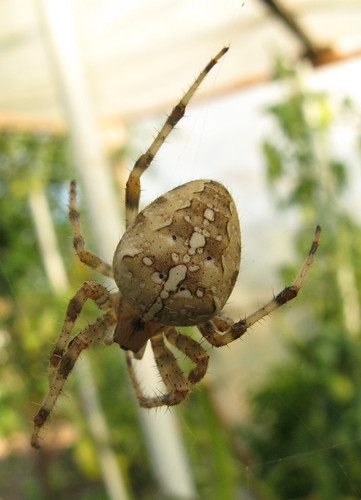Science doesn't have to be all that hard in the elementary grades. I don't think it has to be all that complicated in high school either. But some feel that this subject is not their "gift." OK..I'm no science geek, but I do recognize some UNDENIABLE facts regarding the subject:
SCIENCE IS EVERYWHERE
and
Science Happens!
Oh yeah, just look around. Scientific processes and forms are all over the place. Think about star gazing, cloud watching, animal tracking and watching, seasons changing observations, digging in the dirt, turning over an old log, climbing in rocks and hills~looking for the elements and life such as insects and animals. Science is just out the window or door of our homes which will envelope us in all it's glory!
Not only is Science Everywhere, it also happens all around us. Did you see the leaves change color this fall? Science asks how this happened and goes on to have the answer! Cloud formations bring the imagination to ask questions about what they do. Plants and animals offer a natural fascination for the observer as well! HOW is the question of every thing of this nautural world, seen and UNSEEN!
When we are teaching our young children, it's enough to nurture their natural curiosity for ths world around us all with discussions, observations and seeking out further knowledge. Give your child a "science journal" in the form of writing paper/coloring paper and allow him to go out and SEE (observe) his world~to draw it, color it, to document what he sees in the ways that he has seen it. A five year old's bird drawing will vastly be different than a 10 year old drawing. The questions will be different too as well as the answers! AND the answers will be gained differently too.
As homeschooling parents, we can nurture the natural curiosity further by having good reference materials that give the answers to various questions. Some of these inclue animal guides and nature guides for wildlife and all kinds of plants and rocks...it's endless~There are all kinds from the ones that are particularly about a certain region to all over the country and world. We have Smithsonian Institution's Animal. We really like this because it gives a national picture of what location certain species of animals reside; their habitat and description~gorgeous pictures. You can read another post I wrote where my daughter used this book~The Gator in KY and thepicture of the girls doing the research in Animal. Nurturing natural curiosity for this world is huge in learning science!
We also used Jeanne Fulbright's Science books: Swimming Creatures of the 5th Day, Flying Creatures of the 5th Day, Botany, Astronomy and more! We really enjoyed these, but I'd suggest them for the 3rd grades and up to middle school. There's some serious science in them! Also we used Considering God's Creation which is a Biblically based science overview of all the parts of our world that God created. It's wonderful as well! Both of these vastly different Science curricula can be adapted to both younger and older children, but if using for youngers, I would not require the memorization or testing that older children need. Yes, I do believe in testing for assurance of knowledge, but it need not be formal. Asking questions and discussion are wonderful tools!
The spider picture depicts an event in our life when my children found a wonderful spider and we watched him in a "bug box" for quite a few weeks. He built a web that was unique and we watched him~it was amazing to see! We researched his kind, and sorry I don't remember, but I did reassure that he was harmless, but of course I probably would have harmed myself RUNNING from him in our garden had I found him!!
Two tools for Science for every home:
Plastic bug box or aquarium with a lid with air vents~a jar with air vents will do too so observation can occur~A magnifying glass! This is invaluable in really SEEING the things we WANT TO SEE! It's a precursor the the microscope for a child's curiosity!
OK...so I hope I have you thinking about our world in a way that will lend to natural curiosity and the desire to KNOW MORE in your child!
Merry Christmas!



No comments:
Post a Comment